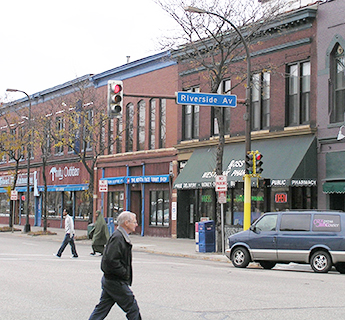Business Districts and Corridors: Support thriving business districts and corridors that build on cultural assets and serve the needs of Minneapolis residents.



Minneapolis’ business districts and corridors serve many vital roles. Residents visit them for daily goods and services, and they provide opportunities for small business and employment. These locations form community gathering places, and together the buildings and businesses provide an identity for the surrounding community. Often that identity is a cultural identity that supports the social networks of the community. The districts and corridors serve as a cultural hub not only for residents of surrounding areas, but also for the broader region.
The cultural identity of these districts and corridors are often cultivated by the people, businesses, and institutions that make up these destinations. Economic growth in these areas should not only mean an opportunity to attract new businesses and investment, but to be inclusive in a way that supports the identity of these places for years to come. These places bring vital energy and diversity to the city and region, and they should be supported.
 ACTION STEPS
ACTION STEPS
The City will seek to accomplish the following action steps to support thriving business districts and corridors that build on cultural assets and serve the needs of Minneapolis residents.
- Reinvest in existing commercial building stock to retain its viability and contribute to a high-quality and distinctive physical environment.
- Support institutions that contribute to the vitality of commercial districts and corridors, such as local business associations, arts venues, and cultural organizations.
- Support community efforts to brand and market retail districts and corridors as cultural districts and cultural corridors.
- Improve the public realm in business districts and corridors in a manner that reflects an area’s history and cultures and that invites private investment.
- Target investment toward business districts and corridors most in need according to objective criteria, while ensuring that improvements benefit existing businesses and increase the diversity of available goods and services.
- Develop programs and strategies specifically aimed at maintaining affordable commercial rents and minimizing business displacement.

